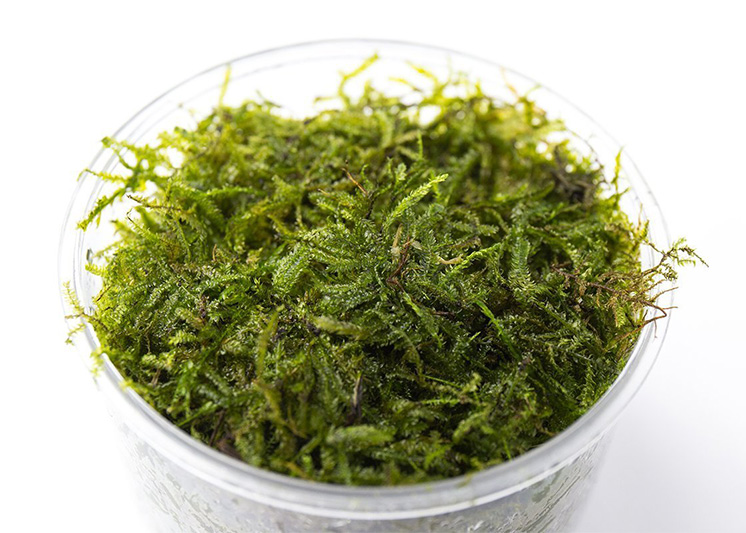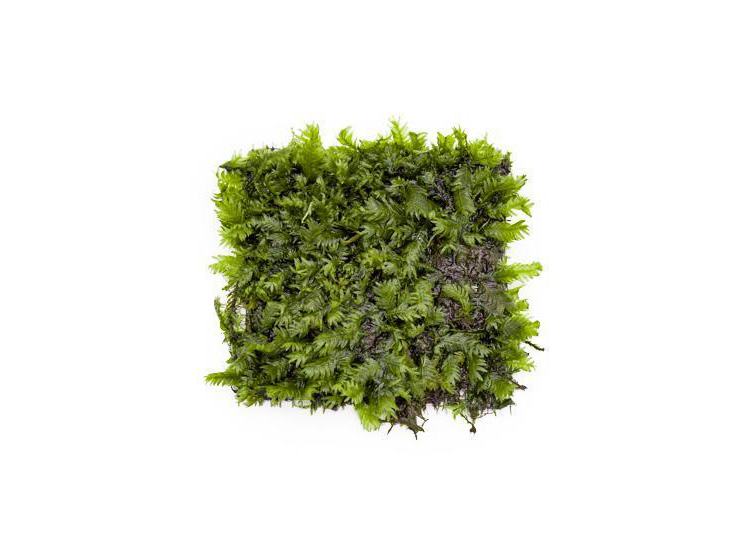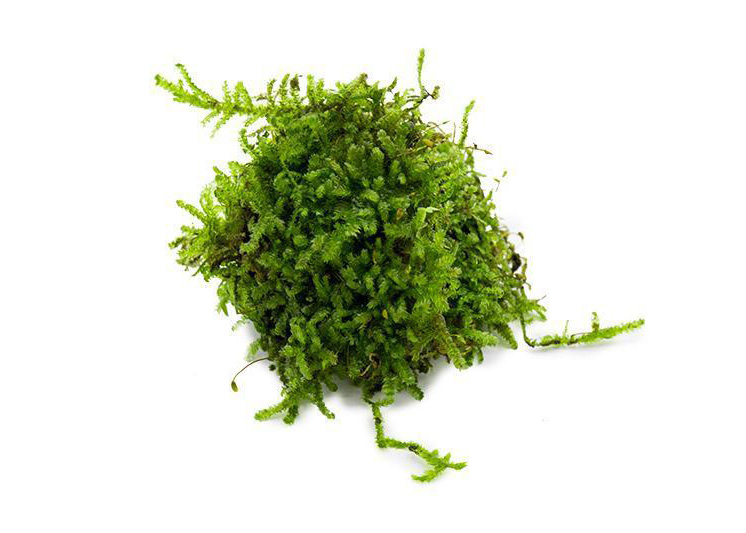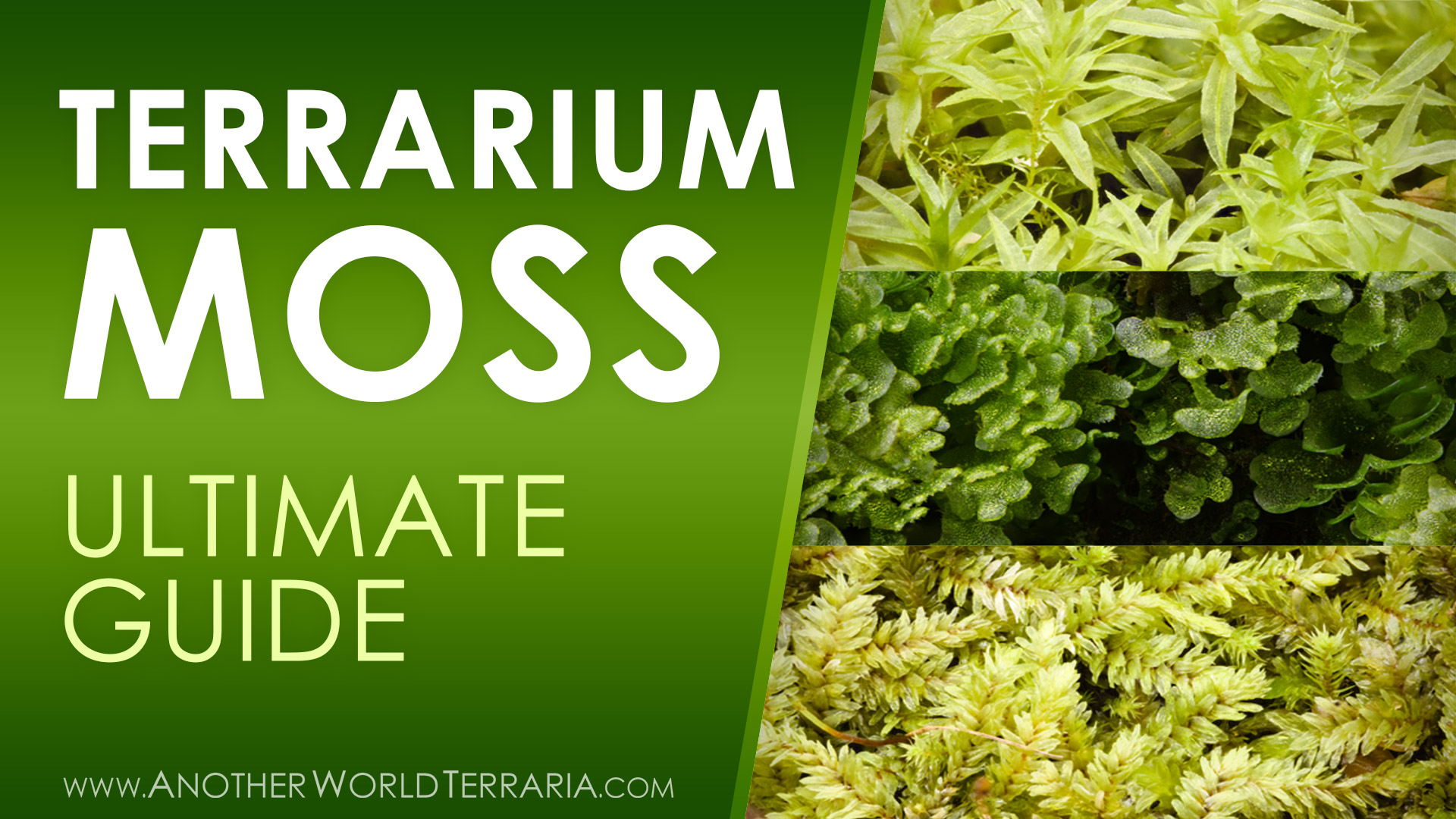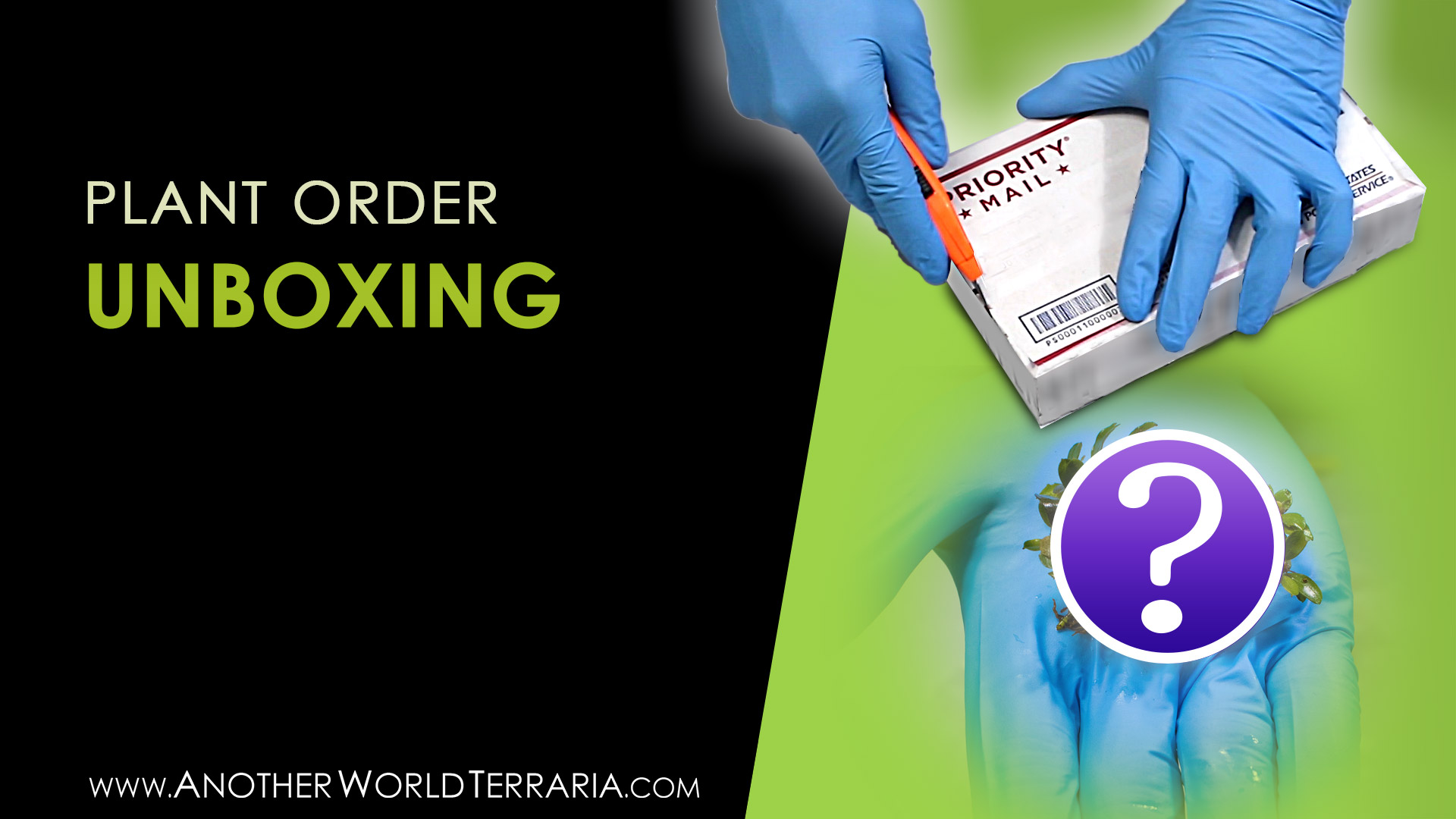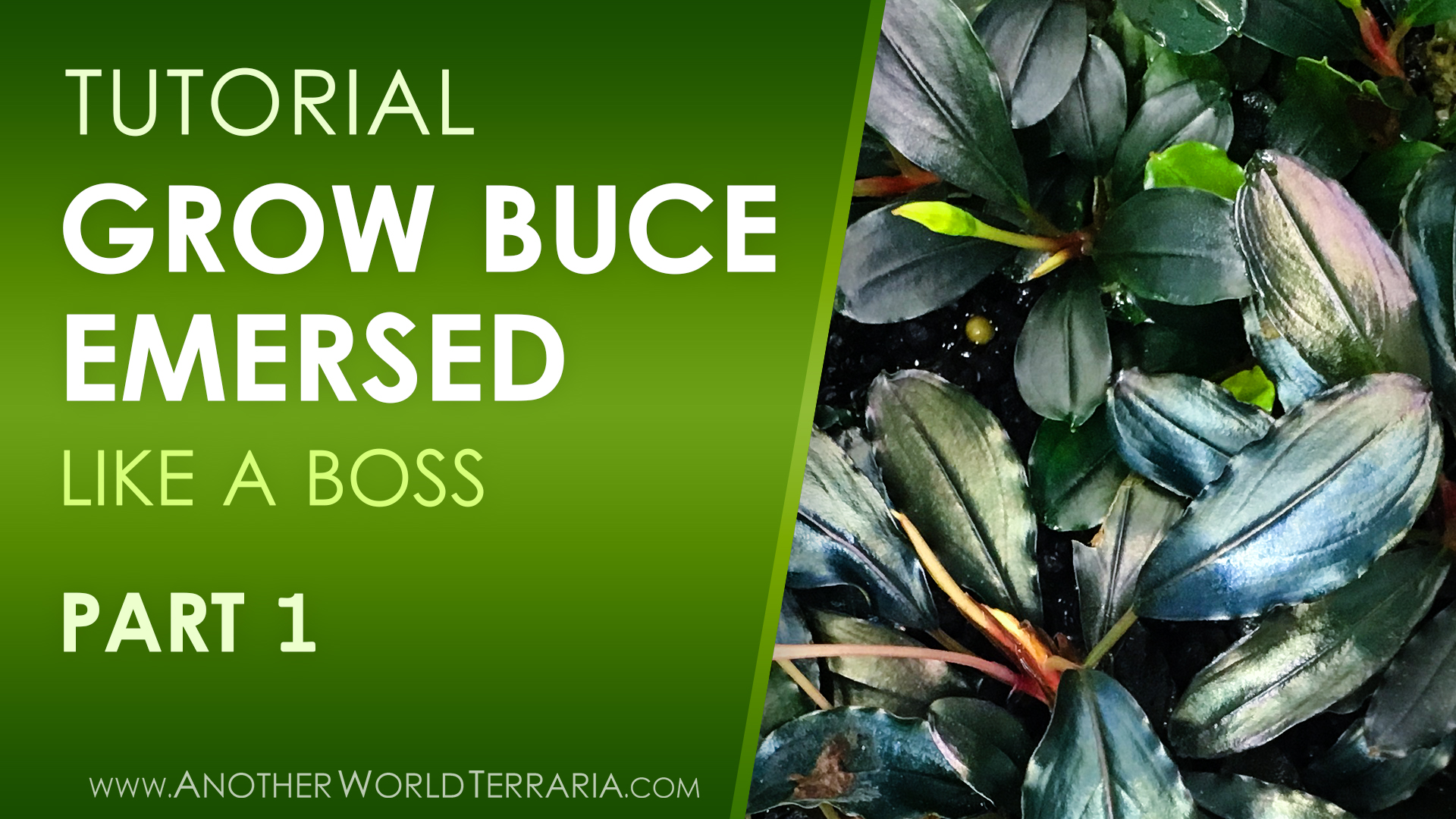This article is a quick-reference of summarized tips for terrarium moss and mossariums.
The point is to save you time and get you going in the right direction. Some tips link to additional articles and videos which offer further details.

Which moss to use
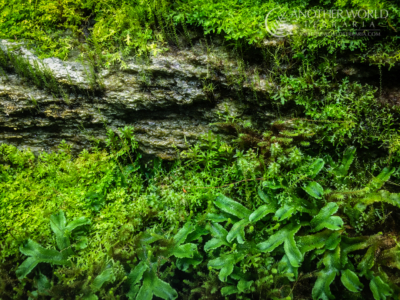
Riccardia, tropical Marchantia, and miscellaneous mosses
Throughout this article, for the sake of brevity, I will use “moss” to refer to moss, liverworts, and hornworts. I highly recommend that you use tropical and subtropical mosses instead of temperate ones.
1. Tropical mosses are best adapted to the temperatures and humidity of a tropical terrarium, so they’ll generally be healthier and more attractive in those conditions.
2. Temperate moss poaching from the wild (forests and parks) is becoming very common. Since so many people are collecting moss, in large quantities, without regard to the effects on the environment, and without care about how it affects the aesthetics of a natural area, it is continually becoming more detrimental. Just because moss is easy to get and “free” does not mean you should be taking it.
By using tropical species from legitimate sources, you are protecting the environment, and you’ll have more beautiful and interesting species which thrive in humid and warm terraria.
How to get moss
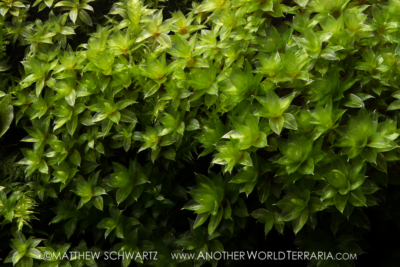
As mentioned, collecting and poaching wild moss from temperate locations is becoming a serious problem. Instead, go with tropical species, which you can get in a number of ways:
- Purchase aquarium mosses (many are tropical and grow well above water).
- Use mosses from tropical plant pots and mounts.
- Ask local nurseries if you can collect moss from their tropical greenhouse plant benches.
- Sample mosses from established terrariums and vivariums.
- Trade with other hobbyists.
- Buy from specialty sellers.
- You can even be patient and watch how moss pops up everywhere from spore!
One source of tropical aquarium mosses which work very well in terraria is Buceplant. Check out their moss selection here.
Also check out my related article, All About Terrarium Mosses and Liverworts
What substrate to use
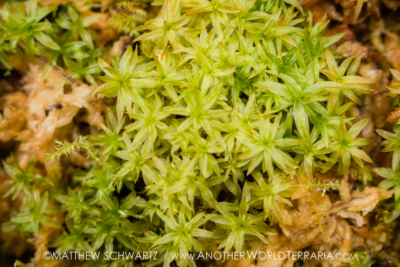
Atrichum species moss
The best substrate choices for tropical moss are:
- Sphagnum
- Aquarium substrates (Fluval Stratum, etc)
- Wet wood and rocks
- Custom mixes with clay elements.
- Synthetic materials such as Hygrolon fabric and EpiWeb panels.
- For species which prefer soil substrates (there aren’t many), use a custom mix instead of bagged potting soil.
Water quality concerns
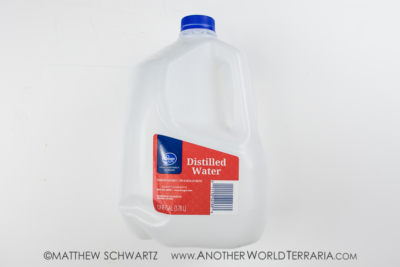
Mosses are sensitive to minerals, salts, and chemicals, so it’s best to use distilled or RO (Reverse Osmosis) water, which are both very pure.
A bonus of distilled and RO water is that terrarium glass will stay clean and clear, because there are no minerals or contaminants to leave residue.
How much to water
The amount of moisture needed will depend on which moss you’re growing. Some species can grow very wet, or even in water, but in general most species like to be evenly moist but not wet.
In most cases you should not allow the substrate to become waterlogged because that can lead to harmful mold, algae, and bacteria. When in doubt, err on the side of watering less as opposed to risking overwatering.
When to use drainage
As long as you don’t overwater, a drainage layer in the substrate is not necessary.
If you are growing larger plants in a terrarium with your moss, then a small drainage layer may be of some benefit.
Moss species which prefer better drainage and don’t like to be constantly wet are best grown on wood, rocks, and vertical surfaces.
Getting humidity right
Tropical and subtropical mosses generally prefer high humidity. Delicate species, and those with filmy foliage (such as Plagiochila liverworts), need very high humidity to prevent them from drying out. Therefore, you will want a container with a snug lid that can contain the humidity.
Choosing containers
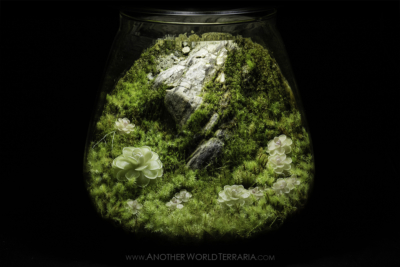 Due to the high humidity preferences of tropical moss, a good container will be waterproof and have a snug lid. Remember to consider how you will adjust the ventilation.
Due to the high humidity preferences of tropical moss, a good container will be waterproof and have a snug lid. Remember to consider how you will adjust the ventilation.
If you’re making a terrarium for display, your choice will be based on aesthetics, but if you’re just culturing moss then you can use any container which is functionally adequate.
Some options to choose from are:
- jars
- glass aquariums with tops
- designer terrariums
- plastic food containers and deli cups
- shoeboxes
- seed domes
I grow many of my tropical mosses and liverworts in grow bins.
Check out my grow bin tutorial series here.
All about nutrients
In general, don’t fertilize unless the moss looks nutrient deficient.
If you’re growing moss with other plants that get fertilized, nutrient levels should be sufficient.
In low-nutrient situations you can experiment with extremely diluted fertilizers (1/10 strength).
Avoid excess nutrients as this leads to algae and other problems. Check out my plant fertilization video here.
Picking a light
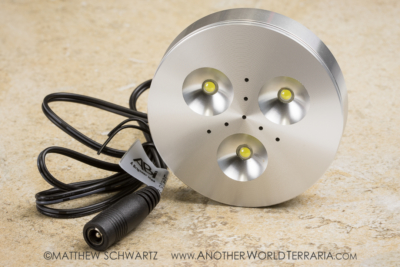
LED bulbs are the best option. They have a low heat output, low risk of burning the moss, use very little energy, and last a long time.
Price varies widely depending on brand and type. There are LED bulbs made for terrariums, but even cheap cabinet lighting “bars” and “pucks” are capable of working very well.
A color temperature of around 6000K (Kelvin) approximates natural light, looks pleasing, and will result in balanced and healthy growth. “Warmer” or “Cooler” Kelvin ratings can be used, but at the extremes they may negatively affect growth and look unnatural.
Check out my plant lights video here.
Light intensity and duration
Try experimenting with different light intensities on various samples of moss and see how they respond.
Although species growth will vary and there are many other factors to consider, you can use the following as a rough guide:
- If the moss gets tall and leggy, and generally looks frail, the light is probably too dim.
- If the moss burns or turns very pale, the light may be too bright.
Leave the lights on for about 12 to 14 hours every day; this is called the “Photoperiod.”
Pro-tips for adjusting light intensity
Besides using different powers of bulbs and different amounts of bulbs, you can adjust the brightness of your lighting by:
- changing the distance between the light and the moss
- using foil reflectors to make light brighter (wrap around the growing area or container)
- adding diffusers to make light dimmer (use sheets of fiberglass window screen, shade cloth, or paper, over the container).
Ventilation and circulation
Air movement helps reduce mold and bacteria, and increases plant health, although the amount needed will vary depending on many factors.
The primary factor will be which species you are growing and their humidity preferences.
For small and simple terrariums, use ventilation via air holes, adjustable vents, opening the lid a crack, and so on. This is called passive ventilation.
For larger terrariums and vivariums, you might want to include some internal air circulation using PC fans.
Mold, bacteria, and algae
Mold, bacteria, and algae are a threat to moss and can quickly kill it.
Small amounts of mold are natural in a terrarium as matter decays, but in excess it means there’s an imbalance somewhere in the ecosystem.
Some bacteria, such as cyanobacteria, can smother moss, as can algae. Both are an indication that nutrients, chemicals, or other conditions are out of balance.
Read on to learn how to prevent these problems.
Keeping things healthy
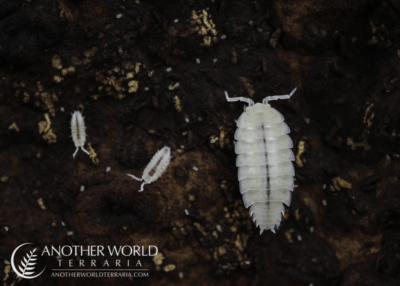
Dwarf White Isopods (Trichorhina tomentosa)
- Introduce some air movement by using ventilation.
- Don’t overwater.
- Avoid wild-collected materials such as rotting wood that harbor mold and insects.
- Remove all dying foliage, plant blooms, and other decaying matter.
- Thin overgrown plants.
- Avoid excess nutrients and bioload.
- Use beneficial microfauna such as springtails and isopods. Microfauna are one of the best-kept secrets to having a thriving terrarium — try them and you’ll fall in love!
Insects and pests
Prevention is better than treatment!
- Avoid wild-collected material and be cautious of greenhouse-collected material.
- Use bug mesh over vents if insects are likely to be around the grow space.
- Wash, inspect, and quarantine all plants for at least three months (six to eight months is even better) before adding to the terrarium.
- If insects appear, determine what they are before taking any action. Never use harsh chemical pesticides in a terrarium!
Choosing landscape materials
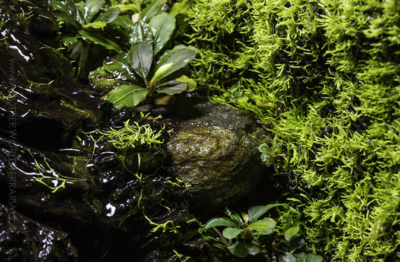 If using rocks in your landscape, be sure the pH and chemical composition won’t harm the type of moss you’re growing.
If using rocks in your landscape, be sure the pH and chemical composition won’t harm the type of moss you’re growing.
Never bake or boil rocks — they can explode! If using wood, be sure it isn’t treated with chemicals.
Also avoid wood that may have harmful insects in it. Note that baking or boiling wood is NOT 100% effective!
It’s best to buy rocks and wood from pet and aquarium stores instead of using wild-collected material.
Design and landscape tips
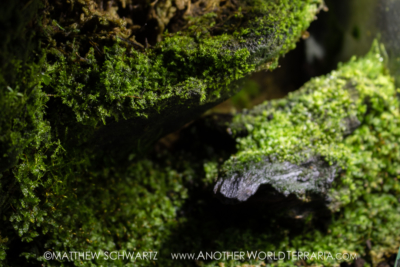 Create an interesting design by varying hardscape height and depth, plant sizes, textures, and so on, so it isn’t flat and boring.
Create an interesting design by varying hardscape height and depth, plant sizes, textures, and so on, so it isn’t flat and boring.
Consider the “rule of thirds” and similar guidelines for placing elements to make asymmetrically balanced layouts.
Be creative and experiment.
Look at photos of mossy areas in nature, or better yet, take a hike! Nature is the best teacher!
Preventing condensation
Although condensation is more likely to occur in high-humidity environments, the humidity is not directly the cause. It is caused by a difference in temperature between the inside and outside of the container.
To reduce condensation, avoid placing the terrarium near sources of heat or cold, and avoid lights which heat up the inside air. Increased ventilation can also help equalize temperatures, but will reduce humidity.
Experiment to find what works best for each terrarium, but be aware that it’s not always possible to completely eliminate condensation.
Propagating moss
Moss is best propagated vegetatively. Two of the simplest methods are
1. tear off pieces of moss and spread them to new locations, and
2. chop moss into small particles and then spread them on a wet substrate, provide bright light, and keep moist.
Recommended Moss Sources
As noted earlier in this article, there are many ways to get tropical moss and liverworts.
One of the best solutions is to use tropical aquarium mosses.
Here are a few of the most popular aquarium mosses on Buceplant.com, one of my favorite vendors.
Check out their full moss selection here.
For more detail and ideas, see the first link in the resources list below.


